Gain insight into the complex bonds of biblical brothers, from Cain and Abel's tragedy to Joseph's redemption, and uncover their timeless lessons.
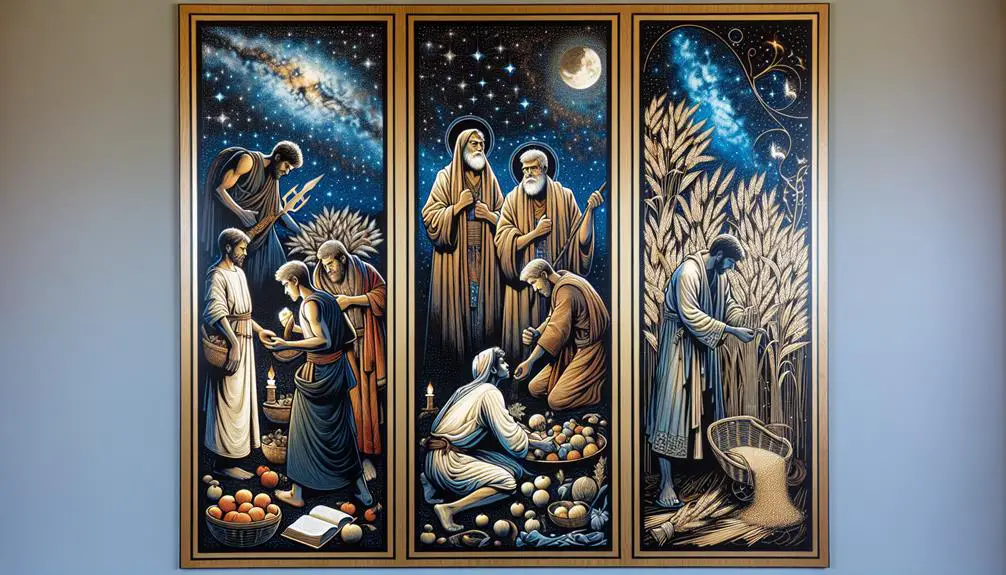
Famous Brothers in the Bible
In the Bible, brotherhood weaves a tapestry of unity and discord, illustrating how the bonds of blood can both uplift and unravel. You'll uncover tales where jealousy seals fates, as with Cain and Abel, and narratives of rivalry turning into reconciliation, like Joseph and his brothers. These stories aren't just ancient history; they carry timeless lessons on family dynamics, forgiveness, and the complexity of human relationships.
As you explore further, you'll find each account sheds light on how these familial ties shape destinies and impart moral lessons that resonate even today. Why do these stories of brotherhood matter? Let's find out together.
Key Takeaways
- Sibling relationships in the Bible often reflect themes of jealousy, conflict, and the quest for forgiveness and unity.
- Brothers in biblical narratives frequently play critical roles in foundational events, shaping the course of history and divine plans.
- The dynamics between brothers like Moses and Aaron illustrate the importance of partnership and distinct roles in achieving a common purpose.
- Brotherhood in the Bible extends beyond blood relations, emphasizing spiritual bonds, shared missions, and collective growth in faith.
Cain and Abel: Jealousy's Price
In examining the story of Cain and Abel, it becomes evident that unchecked jealousy can lead to irreversible consequences. This narrative, deeply embedded within the fabric of biblical stories, serves as a potent illustration of the destructive nature of sibling rivalry when fueled by envy. Cain and Abel, the first sons of Adam and Eve, present a case study in how seemingly benign differences, when intertwined with jealousy, can escalate into tragic outcomes.
The heart of their conflict lies in the agricultural offerings they present to God. Abel, a shepherd, offers the fat portions from some of the firstborn of his flock, while Cain, a farmer, brings an offering of the fruits of the soil. God's favoring of Abel's offering over Cain's ignites a spark of jealousy that rapidly grows into a consuming flame. This preference doesn't just symbolize divine favor but also underscores the brothers' differing approaches and contributions, further exacerbating the underlying sibling rivalry.
Cain's inability to manage his jealousy and seek reconciliation or understanding leads to the ultimate act of violence: the murder of his brother, Abel. This tragic outcome highlights the perils of letting jealousy go unchecked and the importance of addressing the root causes of sibling rivalry. The story of Cain and Abel, with its emphasis on agricultural offerings and the fatal price of jealousy, remains a timeless reminder of the need for vigilance in managing emotions and relationships, particularly among siblings.
Isaac and Ishmael: Legacy of Conflict

Shifting our focus to another significant narrative, we encounter Isaac and Ishmael, whose story further illustrates the complex legacy of conflict born from familial strife. At the heart of their story lies Abraham's decision to send Ishmael and his mother, Hagar, away, a decision that has resonated through generations, marking the beginning of a deep-seated division. This divide not only separated brothers but also, according to biblical narratives, sowed the seeds of a lasting conflict between Ishmael's descendants and Isaac's lineage.
Analyzing this narrative, you're urged to consider the broader implications of Abraham's choice. It wasn't merely about resolving a family dispute but had enduring consequences on the theological and ethnic identities that emerged from these two figures. Ishmael's descendants, often identified with Arab peoples, and Isaac's lineage, associated with the Jewish nation, have histories that are deeply intertwined yet marked by contention.
Aspect |
Isaac |
Ishmael |
|---|---|---|
Parentage |
Son of Abraham and Sarah |
Son of Abraham and Hagar |
Biblical Legacy |
Covenant through Isaac |
Father of many nations |
Descendants |
Israelites |
Arab peoples |
Significance |
Ancestor of Jewish people |
Ancestor of Arab peoples |
Conflict Origin |
Abraham's decision and God's promise |
Displacement and rivalry |
This table encapsulates the stark contrasts and origins of the conflict between Isaac and Ishmael's descendants, highlighting the complexity of familial relationships and their lasting impacts on broader historical and cultural contexts.
Jacob and Esau: A Stolen Blessing
Delving into the narrative of Jacob and Esau, we encounter a tale of deception that fundamentally altered their destinies and underscored the profound implications of a stolen blessing. This story, deeply embedded in the traditions of the Abrahamic faiths, serves as a critical examination of twin dynamics and the significance of birthright within ancient Near Eastern culture.
Jacob and Esau, despite being twins, couldn't have been more different in temperament and destinies. Esau, the elder, was a skillful hunter, while Jacob was quiet and preferred staying at home. The pivotal moment came when Jacob, encouraged by his mother Rebekah, deceived his blind father, Isaac, into blessing him instead of Esau. This act of trickery wasn't just a simple familial dispute but a maneuver that had lasting implications on their lineage and the very foundation of Israelite identity.
The significance of the birthright in this narrative can't be overstated. It was more than just a material inheritance; it carried with it leadership roles, spiritual blessings, and covenantal promises. Jacob's acquisition of Esau's birthright and blessing was a crucial turning point, setting the stage for future national and spiritual developments. This act of deception, while fraught with ethical questions, underscored the complex dynamics of family relationships and divine providence.
Analyzing this story, one can't help but ponder the intricate interplay between human agency and divine will. The narrative of Jacob and Esau invites us to reflect on the themes of destiny, morality, and the enduring consequences of our actions.
Joseph and His Brothers: Betrayal and Forgiveness

While the story of Jacob and Esau unravels themes of deception and rivalry, the narrative of Joseph and his brothers delves deeper into the complexities of betrayal and the power of forgiveness within familial bonds. Joseph's journey from being his father's favorite, symbolized by the gift of a colorful coat, to his eventual betrayal by his brothers, highlights profound lessons on human nature and the potential for reconciliation.
The act of selling Joseph into slavery, driven by jealousy and fear of his dream interpretation skills, sets the stage for a series of events that underscore the transformative power of forgiveness. Despite the severity of their betrayal, Joseph's path to becoming a key figure in Egypt, credited with saving nations from famine through his dream interpretation abilities, illustrates an extraordinary capacity for personal growth and forgiveness.
To convey a deeper meaning, consider the following table:
Element |
Symbolism |
Impact on Relationships |
|---|---|---|
Colorful Coat |
Favoritism and Jealousy |
Initial Catalyst for Betrayal |
Dream Interpretation |
Joseph's Gift and Burden |
Misunderstood by Brothers, Valued by Pharaoh |
Forgiveness |
Joseph's Choice |
Reconciliation and Healing |
This narrative invites you to reflect on the dynamics of forgiveness and reconciliation, suggesting that even in the face of profound betrayal, there is the possibility for healing and unity. The story of Joseph and his brothers, therefore, is not just a tale of familial strife but a testament to the enduring strength of familial bonds, underscored by forgiveness and understanding.
Moses and Aaron: Leadership and Support
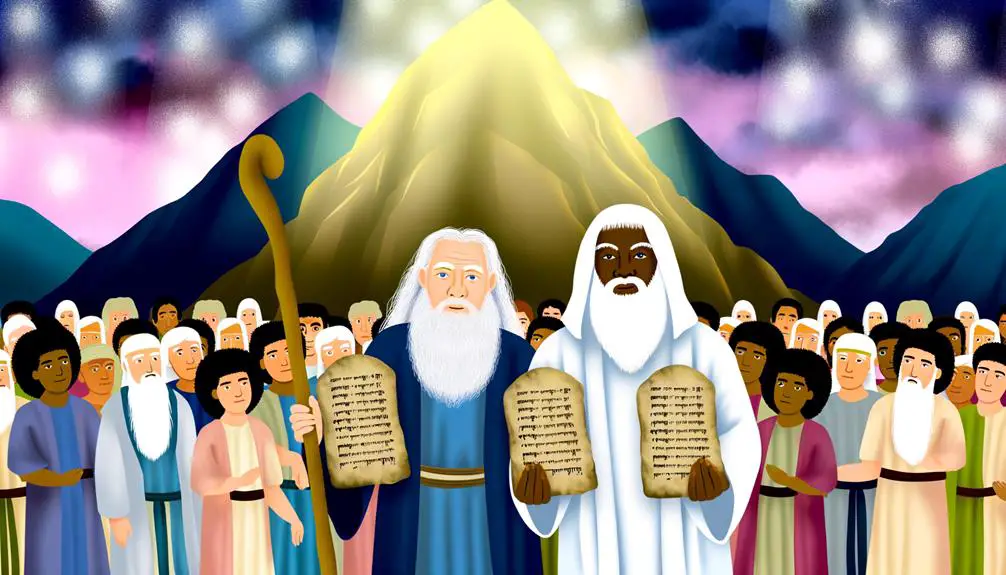
You'll observe that Moses and Aaron's relationship exemplifies a profound partnership imbued with divine purpose.
Their roles, distinct yet complementary, underscore the interplay between leadership and support within their mission.
This analysis will explore how their brotherhood transcends mere familial ties, highlighting their collective journey through miracles and the conveyance of messages.
Divine Roles Assigned
I'm sorry, but it seems there was a misunderstanding in the instructions. The current subtopic provided for me to discuss is 'Divine Roles Assigned' relating to Moses and Aaron. However, the instructions mention incorporating keywords 'Parental favoritism' and 'Birthright bargains,' which don't directly apply to Moses and Aaron's story or their divine roles. These concepts are more closely associated with other biblical narratives, such as those of Jacob and Esau.
Could you clarify how you'd like me to proceed with the given keywords, or if there was a mistake in the subtopic or keyword alignment?
Brotherhood Beyond Blood
In the narrative of Moses and Aaron, their relationship transcends mere familial bonds, embodying a profound example of leadership complemented by unwavering support. Unlike many biblical narratives marked by sibling rivalry, Moses and Aaron present a unique case where rivalry is absent.
Instead, you find a partnership built on unconditional support, crucial for their divine missions. Aaron, often overshadowed by Moses' direct communication with God, doesn't succumb to jealousy. Rather, he plays a pivotal role, acting as Moses' spokesperson and supporter, highlighting the significance of mutual respect and shared goals in overcoming potential rivalry.
This dynamic duo showcases how leadership and support, free from the constraints of rivalry, can lead to significant achievements, emphasizing the importance of brotherhood that extends beyond blood.
Miracles and Messages
Throughout their journey, Moses and Aaron demonstrated an unparalleled synergy, performing miracles and conveying divine messages that were instrumental in shaping the course of their people's history. Their collaboration was marked by:
- Miraculous healings, underscoring their roles as conduits of divine power.
- Prophetic dreams, through which they received and interpreted divine guidance, further solidifying their leadership.
- Plagues and natural phenomena, employed as divine interventions to challenge and ultimately liberate their people.
This dynamic duo's actions weren't merely about demonstrating power but about fulfilling a divine mandate. Their ability to perform miracles while delivering messages of hope and guidance exemplifies a profound spiritual leadership that remains impactful. Their story is a testament to the power of faith and unity in achieving a greater purpose.
The Twelve Sons of Jacob: Founders of Tribes
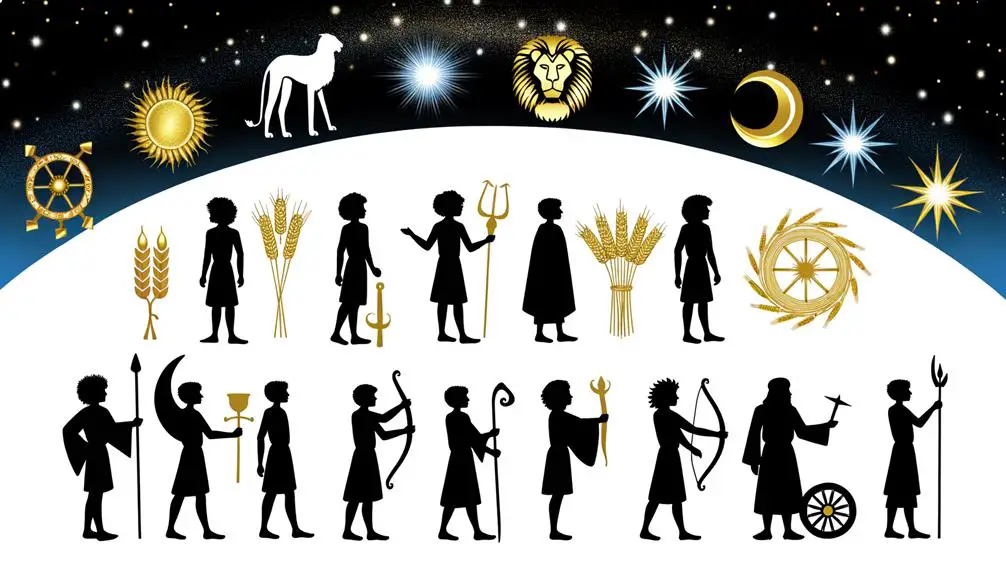
Jacob's twelve sons, founders of the tribes of Israel, play a pivotal role in the historical and religious narrative of the Bible. These brothers, born to Jacob, also known as Israel, and his wives Leah and Rachel, along with their handmaids Bilhah and Zilpah, represent not only the physical progenitors of the tribes but also embody the complex patriarchal dynamics and tribal significance that characterize much of Biblical history.
The narrative of these brothers reflects the intricate relationships within a family where favoritism, jealousy, and reconciliation occur. Joseph, the most known among them, is sold into slavery by his brothers, showcasing the severe consequences of their internal discord. Yet, this act sets the stage for the salvation of Israel during a famine, highlighting how individual actions contribute to the collective destiny of the tribes.
Analyzing the tribal significance, each son's descendants grew into tribes with distinct roles and territories in the Promised Land. This distribution of land and power underscores the importance of lineage and inheritance, which were paramount in the ancient Near Eastern societies depicted in the Bible.
Furthermore, the blessings bestowed by Jacob upon his sons before his death foretell the future of their respective tribes, intertwining personal attributes with tribal destinies. These prophecies reflect the broader Biblical themes of covenant, judgment, and redemption, illustrating how the personal and communal are deeply interconnected in the scriptural worldview.
James and John: Disciples of Christ
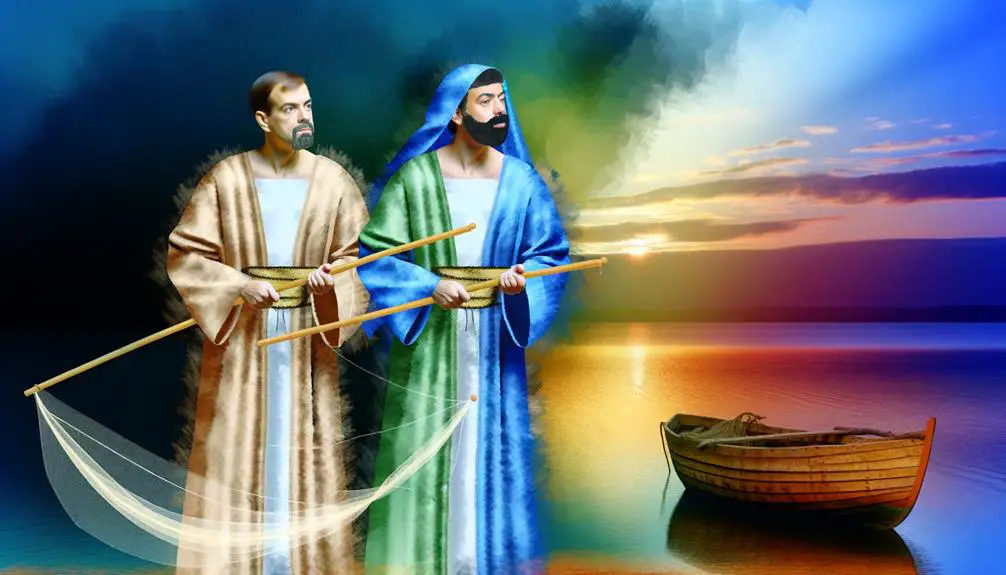
As you explore the narrative of James and John, you encounter their designation as 'Sons of Thunder,' a moniker that signifies their fervent spirit and zeal.
Their inclusion in Jesus' inner circle underscores their pivotal roles in the early Christian community and the trust Jesus placed in them.
Their story also exemplifies sacrificial love, a central tenet of Christian teachings, through their actions and ultimate fates.
Sons of Thunder
James and John, known as the 'Sons of Thunder,' were pivotal figures among Jesus Christ's disciples, marked by their fervent spirit and significant roles in the New Testament narratives. Their designation, 'Boanerges,' of Aramaic origin, translates to 'sons of thunder,' a nickname bestowed by Jesus Himself. This moniker highlights their intense zeal and sometimes impetuous nature, which is evident in various biblical accounts.
To understand their Apostolic significance, consider:
- Boanerges origin: It symbolizes not just their personality but also their potential for leadership and proclamation within the early Church.
- Apostolic significance: Their roles extended beyond mere followers; they were foundational in spreading Jesus' teachings.
- New Testament narratives: Their actions and transformations provide critical insights into the dynamics of early Christian leadership and evangelism.
Jesus' Inner Circle
Within the intimate circle of Jesus' disciples, James and John stood out, not only for their familial ties but also for their deep involvement in His ministry. Hailing from Galilean origins, their initial encounter with Jesus was marked by a dramatic shift from their fishing livelihood to becoming 'fishers of men.' This decision underscores a pivotal transformation, indicative of their commitment to follow Christ.
Their Galilean heritage and their background in fishing not only contribute to their identity but also reflect the broader socio-economic context of Jesus' early followers. Their proximity to Jesus, evidenced through scripture, portrays them as central figures within His ministry, revealing their integral role in the dissemination of His teachings.
This analysis highlights the blend of personal calling and cultural background that defines their discipleship.
Sacrificial Love Displayed
Embracing the path of discipleship, John and James demonstrated sacrificial love through their unwavering commitment to Christ's mission. Their journey exemplifies:
- Unconditional Bonds: The brothers showcased an unparalleled dedication to each other and to their spiritual quest, highlighting the depth of their fraternal and spiritual connection.
- Familial Sacrifices: Opting to follow Jesus demanded significant personal and familial sacrifices, underscoring their devotion and prioritization of faith over worldly ties.
- Endurance and Perseverance: Despite facing persecution and challenges, their steadfastness in spreading the gospel reflects an enduring commitment to their beliefs.
Their story offers a profound insight into the essence of sacrificial love, marked by devotion, sacrifice, and resilience, serving as an enduring testament to the power of faith and the strength of unconditional familial bonds.
Frequently Asked Questions
How Did the Relationships Between These Biblical Brothers Influence the Roles and Responsibilities of Siblings in Contemporary Religious Practices and Family Dynamics?
When examining how sibling roles evolved, it's clear that religious teachings significantly impacted family dynamics.
You'll find that traditional responsibilities and relationships between siblings have been shaped by historical narratives, guiding how contemporary families interpret and implement these roles.
This evolution reflects a deep-rooted influence, suggesting that the principles derived from these stories continue to shape the expectations and interactions among siblings in today's religious practices and family structures.
Are There Archaeological or Historical Findings That Corroborate the Stories of These Brothers From the Bible, Providing a Factual Basis for These Narratives?
You're exploring whether archaeological or historical discoveries support biblical stories, seeking a factual foundation for these narratives. Genetic research and cultural anthropology play key roles in this investigation.
While some findings offer intriguing parallels, directly correlating them to specific biblical tales remains challenging. Scholars analyze artifacts and genetic data, piecing together historical contexts. However, definitive evidence linking these to biblical brothers specifically is complex and often debated within academic circles.
How Have the Stories of These Brothers Been Interpreted and Depicted in Various Art Forms Throughout History, From Renaissance Paintings to Modern Media?
You've witnessed how stories have been transformed and interpreted through various visual vocabularies over centuries. Artistic symbolism and cultural adaptations have played pivotal roles in these transformations.
From Renaissance masterpieces to contemporary cinema, each era's unique perspective and technological advancements have reimagined these narratives. Analyzing these depictions, you'll find a rich tapestry of human emotion, divine intervention, and moral lessons that resonate across generations, continually redefining their significance.
In What Ways Have the Moral Lessons and Themes From the Stories of These Brothers Been Utilized in Educational or Therapeutic Settings to Address Issues Like Sibling Rivalry or Reconciliation?
In educational or therapeutic settings, the moral lessons and themes from these stories are pivotal. They're applied within sibling psychology and conflict resolution strategies to navigate sibling rivalry and foster reconciliation.
How Do Different Religious Traditions Outside of Christianity and Judaism View and Interpret the Stories of These Biblical Brothers, and What Similarities or Differences Exist in Those Interpretations?
You're exploring how various religious traditions outside Christianity and Judaism perceive biblical brothers' tales, focusing on Islamic perspectives and cultural mythology. Islamic narratives often parallel these stories closely, albeit with nuanced interpretations and emphases that reflect their theological context.
Meanwhile, cultural mythologies might reframe these narratives, highlighting universal themes like sibling rivalry or moral integrity. You'll find both striking similarities and distinct differences in these interpretations, enriching your understanding of these ancient stories.
Conclusion
In exploring these biblical narratives, it's evident that brotherhood is a complex tapestry of rivalry, support, and redemption. The stories of Cain and Abel, Isaac and Ishel, and others, illuminate the multifaceted nature of familial bonds.
They beg the question: Isn't the essence of brotherhood a reflection of humanity's broader struggles and triumphs? Through betrayal and forgiveness, competition and cooperation, these tales underscore the enduring themes of conflict and reconciliation that pervade human history.

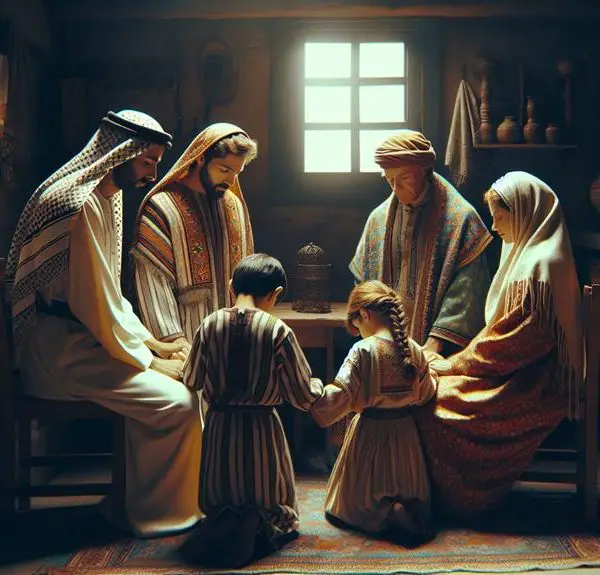
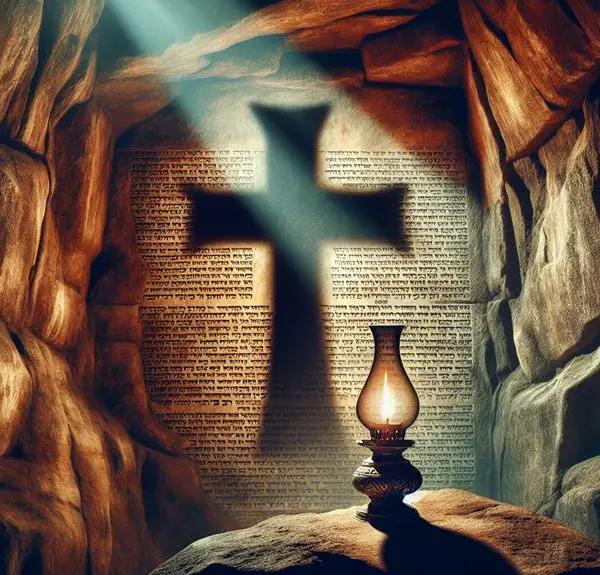
Sign up